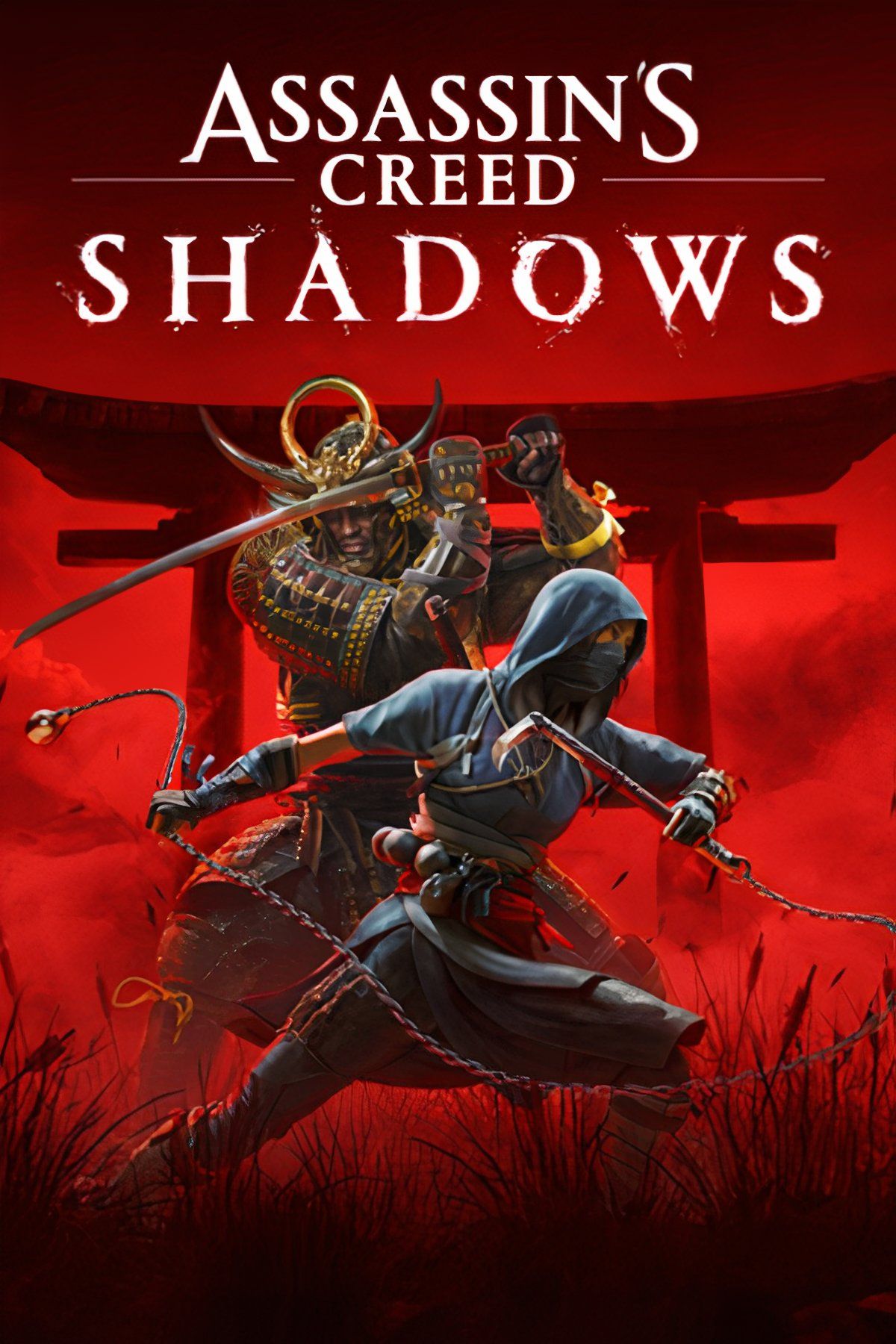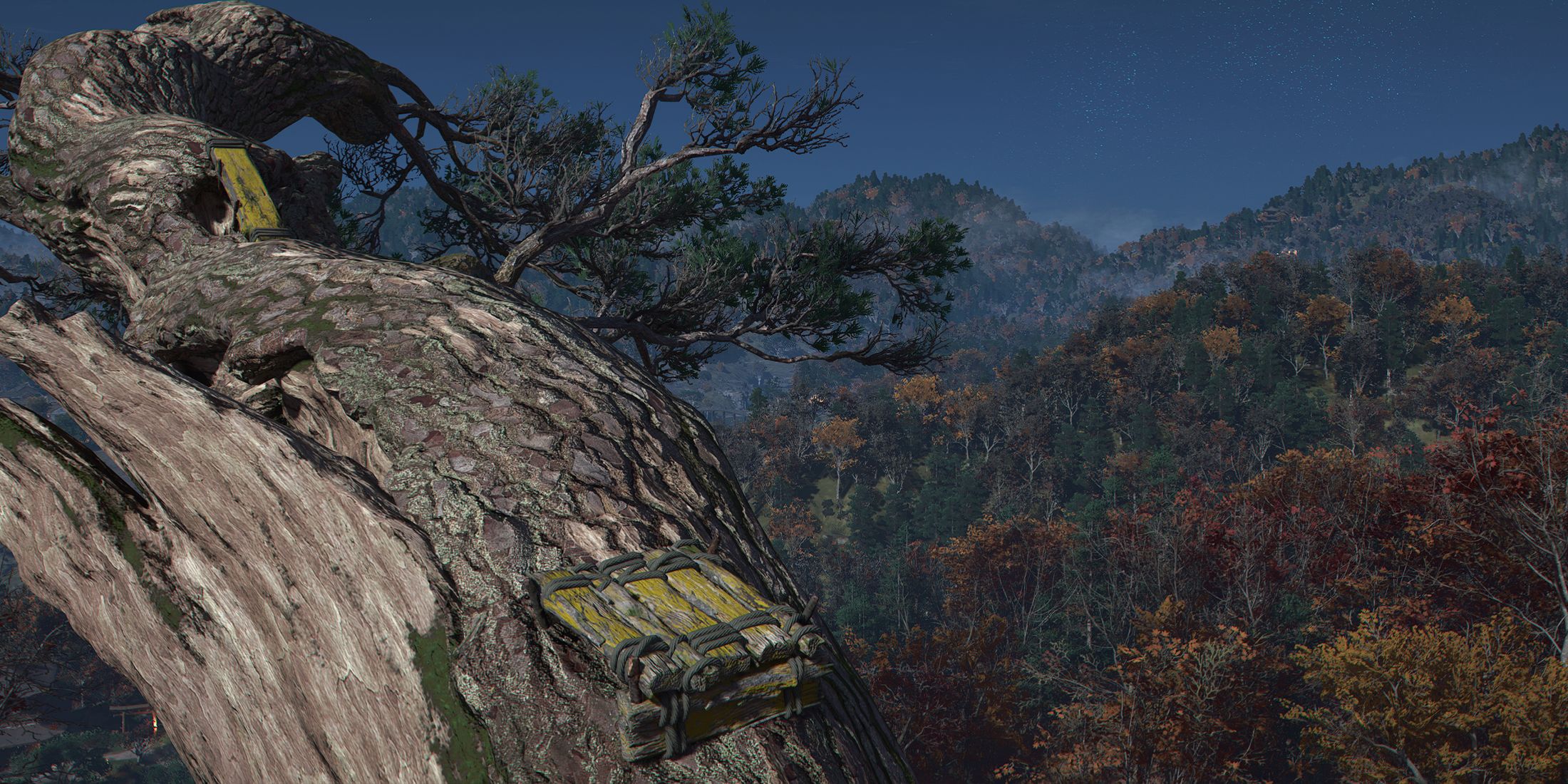Summary
- Yellow paint in Assassin’s Creed Shadows guides players through the world efficiently.
- The subtle yellow paint blends with the immersive feudal Japan setting.
- The parkour mechanics required the inclusion of yellow paint for clarity.
Yellow paint in games, otherwise known as a form of “signposting,” has often been held in contempt within some circles of the gaming community, despite how helpful it can actually be in the right scenario. Generally, yellow paint is used to draw players’ attention to a certain area that they can interact with, whether it be a door that can be opened, a ladder that can be climbed, or a ledge that can be grabbed. Unfortunately, some gamers find the inclusion of yellow paint in games to be immersion-breaking, seeing it as a blatantly artificial design cue that stands out unnaturally from a game’s world. That ongoing controversy has now found its way into Assassin’s Creed Shadows, which has yellow paint scattered throughout its world to serve as a helpful guide.
Truthfully, there is quite a bit of yellow paint in Assassin’s Creed Shadows‘ open world, with the majority of it simply showing players where they can climb. To be fair, it can be a bit immersion-breaking when viewed through a certain lens, especially considering how immersive Assassin’s Creed Shadows‘ depiction of feudal Japan actually is. Even so, one could argue that it might be just as immersion-breaking, if not more so, if the yellow paint wasn’t there, thanks to Assassin’s Creed Shadows‘ new parkour mechanics. As such, there remains an argument in defense of the game’s use of yellow paint, and it’s actually fully supported by what Ubisoft experienced during the game’s testing phase.

Related
Ghost of Yotei Can Add Depth to Its Meditation By ‘Stealing’ This AC Shadows Feature
Ghost of Yotei could deepen its meditative focus by adapting AC Shadows’ Kuji-Kiri, an immersive ritual that ties reflection to character growth.
Assassin’s Creed Shadows Is Better With Yellow Paint
Assassin’s Creed Shadows Originally Didn’t Have Yellow Paint
Interestingly enough, Assassin’s Creed Shadows didn’t originally have yellow paint. This alone is a testament to Ubisoft’s desire to provide an immersive feudal Japan experience above all else, and it’s arguably still immersive, even with the yellow paint. However, in an interview with GamesRadar, Assassin’s Creed Shadows‘ creative director Jonathan Dumont stated, “We didn’t have [yellow paint] until players were really struggling in playtests to find their path when engaging in hidden trails activity.” As a result of those struggles, Ubisoft added yellow paint to ensure players knew where to go as they explored the world.
Assassin’s Creed Shadows‘ yellow paint, as immersion-breaking as some may find it to be, is still very subtle in its color, so it’s not so off-putting in the long run.
Sure, it’s possible to view Ubisoft’s reasoning for including yellow paint as little more than a Band-Aid over the game’s real issues, whether those issues are attributed to bad world design or parkour mechanics in need of some fine-tuning. At the same time, in order to ensure that Assassin’s Creed Shadows‘ depiction of feudal Japan remains consistent and somewhat accurate throughout its open world, it might not have been able to make those adjustments. In light of that, yellow paint really may have been the best path for it to take.
Assassin’s Creed Shadows’ Parkour Limitations Benefit From Yellow Paint
Some might even argue that Assassin’s Creed Shadows‘ new parkour mechanics are the real problem, which take a more grounded approach than they ever have, and so perhaps they should have been adjusted during development to make things clear enough that yellow paint wouldn’t be needed. However, the goal of Assassin’s Creed Shadows‘ new parkour mechanics was to keep gameplay more grounded in order to emphasize Naoe’s stealth prowess and Yasuke’s direct approach to combat.
In other words, a balance had to be struck somewhere that didn’t encourage players too strongly to remain on rooftops while they’re infiltrating a castle in Assassin’s Creed Shadows, while simultaneously giving them freedom to climb if they ever felt it was necessary. Add to that the density of Assassin’s Creed Shadows‘ open world, not just because Ubisoft simply wanted it to be, but because it needed to be in order to accurately reflect feudal Japan’s open environments. That density makes it hard at times to distinguish which areas are traversable and which aren’t, highlighting the need for yellow paint.
The goal of Assassin’s Creed Shadows‘ new parkour mechanics was to keep gameplay more grounded in order to emphasize Naoe’s stealth prowess and Yasuke’s direct approach to combat.
In the end, yellow paint in Assassin’s Creed Shadows may not please everyone, but its inclusion seems less like a shortcut and more like a necessary compromise. When faced with the challenge of guiding players through a complex, grounded world without interrupting the flow of gameplay, Ubisoft made a choice that Assassin’s Creed Shadows is probably better for. It may not be the most desirable solution, but it ensures that Assassin’s Creed Shadows‘ exploration remains intuitive without sacrificing the authenticity it is clearly aiming for.

- Released
-
March 20, 2025
- ESRB
-
Mature 17+ // Blood and Gore, Intense Violence, Language











Leave a Reply